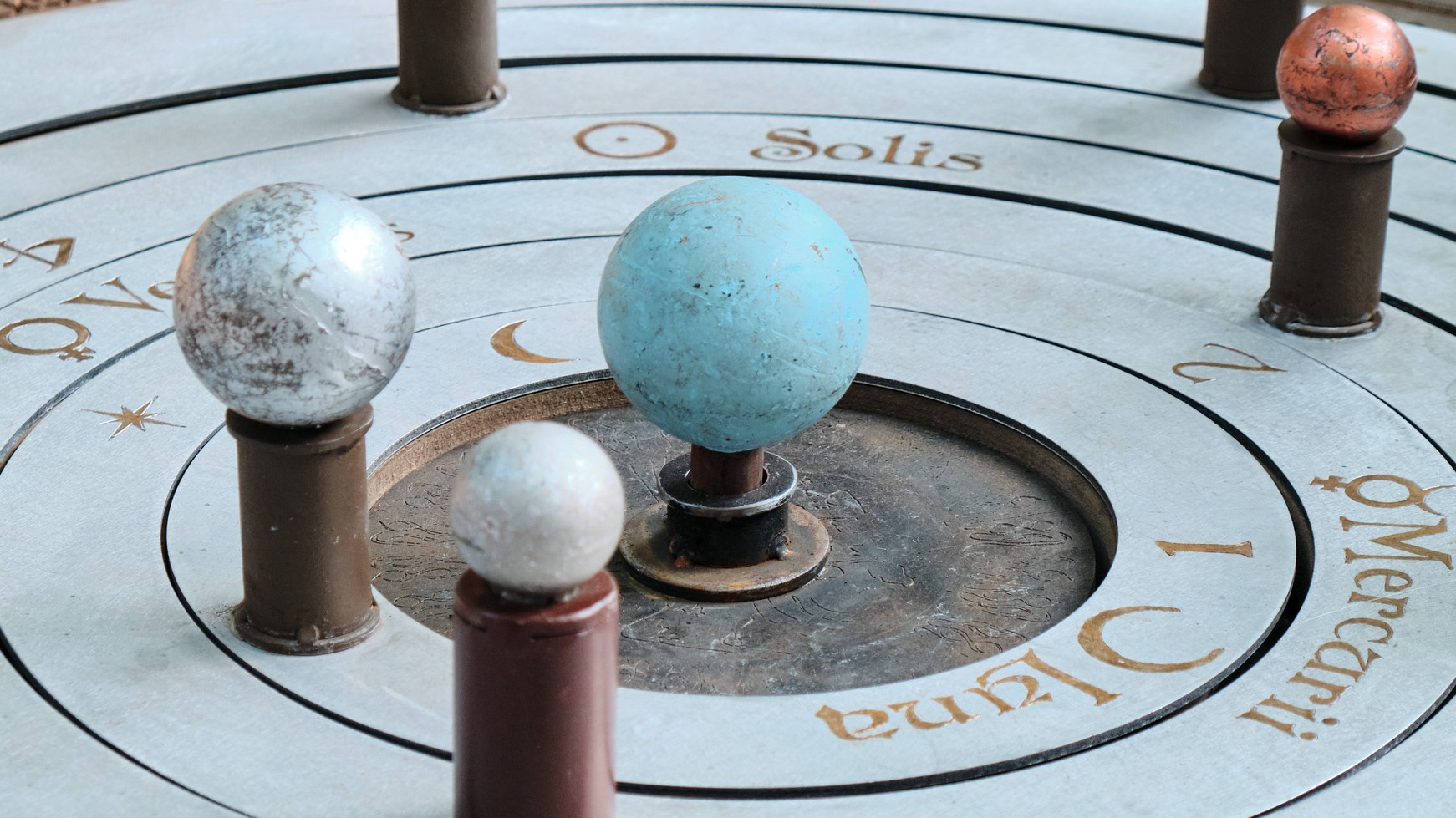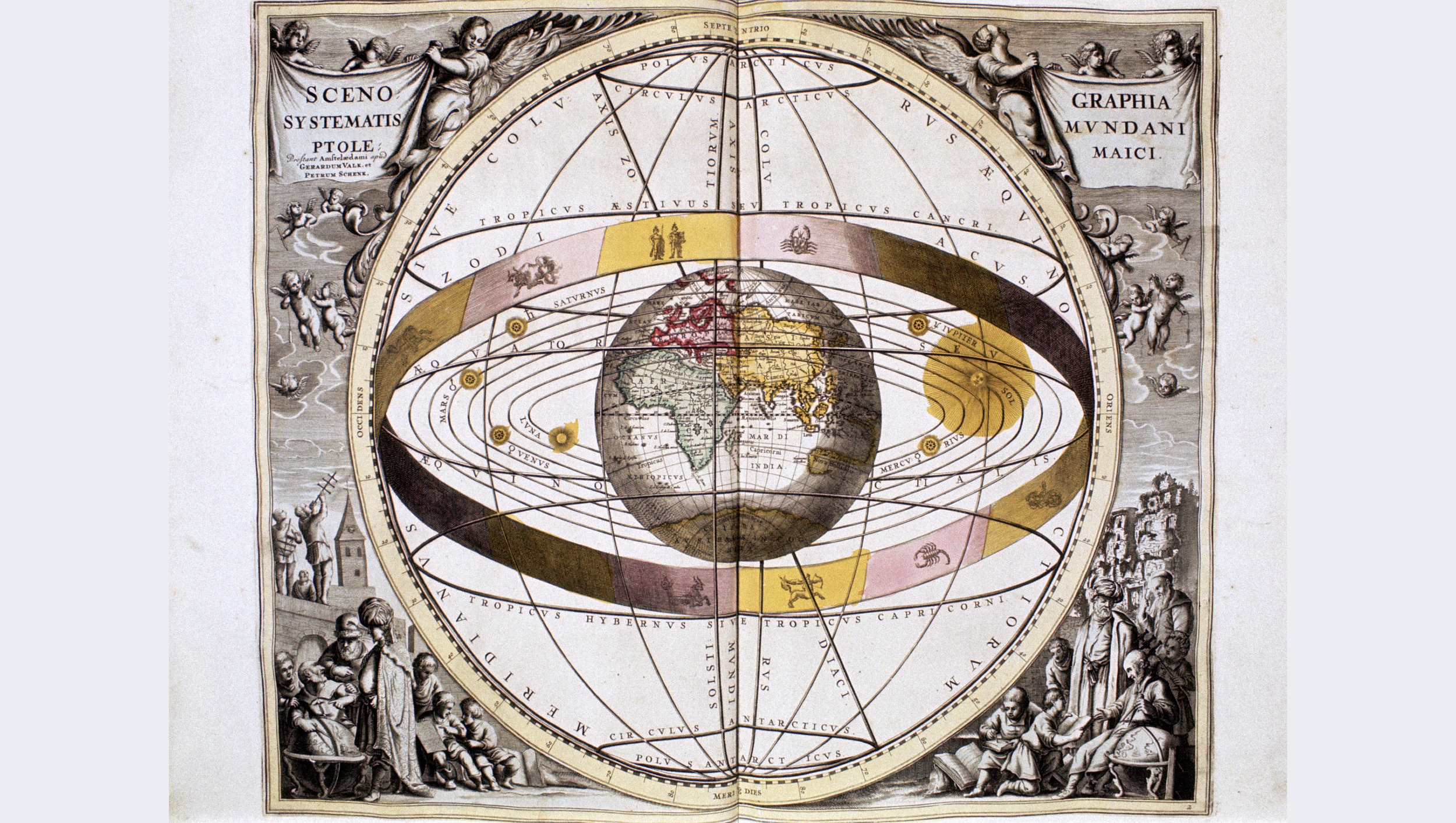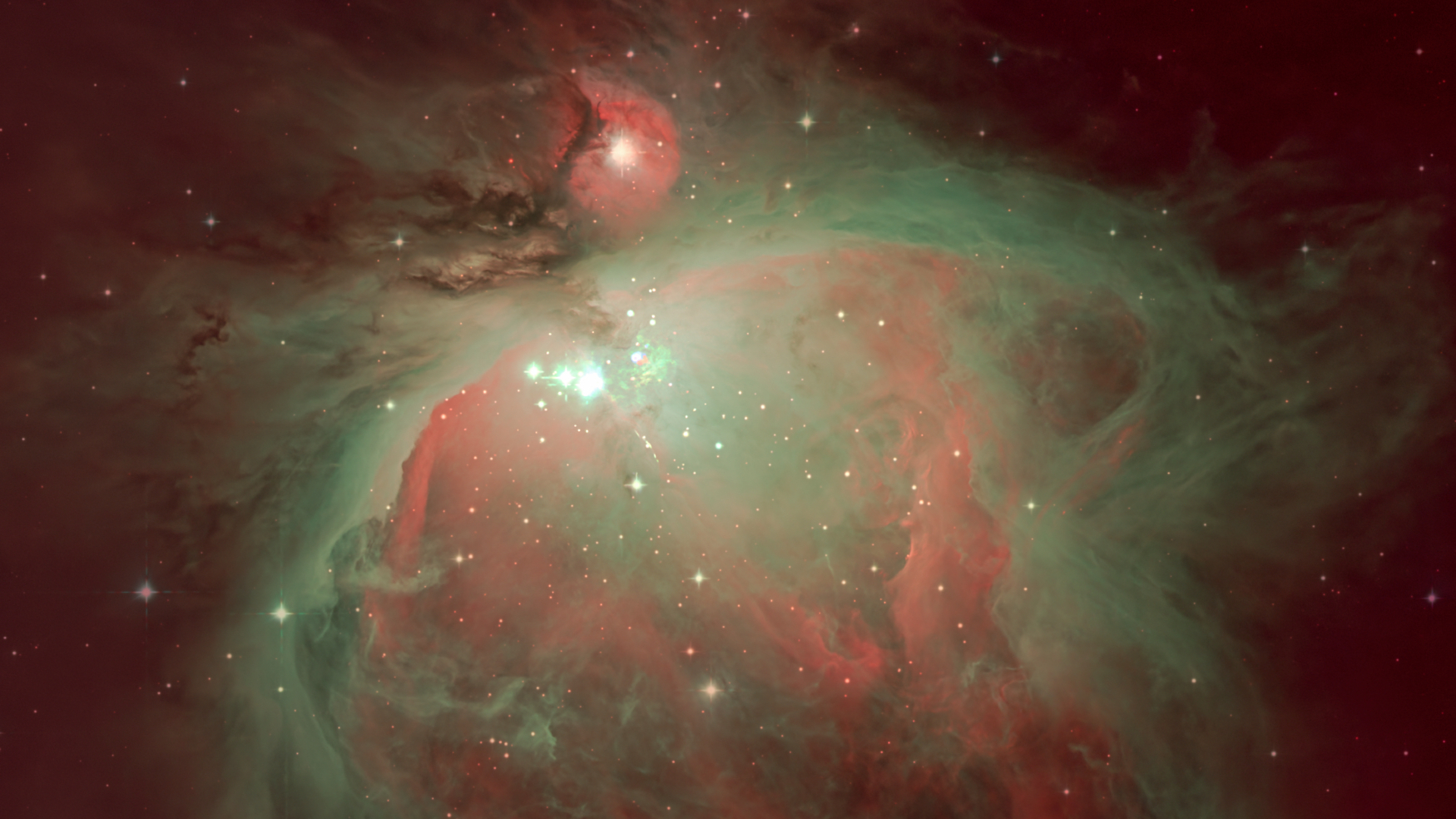Geocentric model: The Earth-centered view of the universe
The geocentric model is a debunked theory that the Earth is the center of the universe, with the sun and planets revolving around it.

Once widely accepted, the geocentric model is now a debunked theory that the Earth is the center of the universe, with the sun and planets revolving around it.
Nevertheless, some still believe the universe revolves around them. According to a 2012 survey conducted by the National Science Foundation of 2,200 people in the United States, when asked "does the Earth go around the sun, or does the sun go around Earth?" a quarter answered incorrectly.
This antiquated view was once our only perspective of the cosmos. The ancient Greeks were the first to suggest a geocentric view of the universe. According to NASA, Eudoxus was the first to create a model of the geocentric universe around 380 BCE. Aristotle then came up with a more detailed geocentric model, which was later refined by Claudius Ptolemaeus (also known as Ptolemy) in his treatise Almagest, which was released in the 2nd century CE according to the Mathematical Association of America. NASA stated that "Ptolemy represents the epitome of knowledge of Grecian astronomy". This is reflected in the fact that the geocentric model stood the test of time and was accepted for nearly 1,500 years.
Related: Star maps through the ages: A Q&A with the author of 'The Sky Atlas'
For thousands of years humans have tried to make sense of the skies above and our understanding of the universe has evolved alongside technological advances and scientific knowledge.
When gazing up at the night sky from what feels like a fixed reference point and witnessing the stars and planets dance across the sky we can understand why the ancient Greeks adopted the geocentric view of the universe. They believed that the Earth was at the center with the sky or 'heavens' rotating around it in a series of layered spheres.
According to the educational website Lumen Learning, Ptolemy's complicated geocentric model stated that a planet moves in a small circle (known as an epicycle), the epicycle then moves around Earth in a larger circle (known as a deferent).
Breaking space news, the latest updates on rocket launches, skywatching events and more!
The order of the solar system with regards to the geocentric model, according to Penn State University is Earth (stationary and at the center), moon, Mercury, Venus, sun, Mars, Jupiter and Saturn. As stars appeared to move much slower than the planets, they were placed in the outermost sphere, furthest away from Earth, according to Lumen Learning.
Despite the complexity of the model, this view was widely accepted for many years. And most of the time the model worked. It could explain why stars appear to rotate around Earth once per day and why planets move differently to stars. According to NASA, The geocentric model also conformed to religious beliefs at the time as many Greek philosophers and astronomers believed that the gods created man and the heavens are divine then of course we must lie at the center of it all.
Related: What's the story behind the stars?
Assumptions of the geocentric model
Scientific models are used to test our understanding of the laws of science by predicting the behavior of a system. If observations of a real event match predictions made by a model then we know the model is a good fit; however, if the observations do not match predictions made, then the model needs to be reworked.
According to Penn State University, the ancient Greeks firmly held onto several scientific assumptions that formed the basis of the geocentric model:
- The Earth is the center of the universe and is stationary.
- The planets, sun and stars revolve around Earth.
- All motions in the sky should follow circular paths as objects are attached to spherical shells.
- Objects obeyed the rules of 'natural motion' meaning they orbited Earth at the same speed.
The Copernican Revolution
Though the geocentric model stood the test of time for nearly 1,500 years and could explain some observations of the cosmos as well as conforming to religious beliefs at the time, it was by no means 'simple'.
Occam's razor is a term used by scientists to help guide the creation of theoretical models. According to the American Association for the Advancement of Science (AAAS), it doesn't necessarily mean to go with the simplest theory whether it's right or wrong; it instead "tries to cut through the clutter to find the best theory based on the best scientific principles and knowledge at the time".
At the beginning of the 16th century, Nicolaus Copernicus challenged the geocentric model and proposed that the Earth and other planets revolve around the sun. This sun-centered heliocentric model simplified the motion of the planets by removing the more complicated ideas of epicycles and deferents, according to Lumen Learning. Aware that his views that we were no longer at the center of the universe would ruffle a few feathers in both the scientific and religious communities, Copernicus waited to publish his theory De revolutionibus orbium coelestium (On the Revolutions of the Celestial Spheres) until 1543, the year of his death.
Copernicus stated his heliocentric model that could explain the apparent changes in the motion of the planets and the "Copernican Revolution" began. Though more accurate than the geocentric model, Copernicus' heliocentric model still had its flaws. According to an article published in The Conversation, Copernicus suggested that Mars' retrograde motion across the sky was merely an illusion, caused by Earth "overtaking" the Red Planet as they orbit the sun. Copernicus' heliocentric model failed to fully explain the motion of the planets as it was based on the planets moving in perfect circles. Johannes Kepler then refined the model by stating that the planets moved in elliptical orbits rather than circular. Kepler's model then matched observations perfectly so the model no longer needed reworking.
Gradual heliocentric acceptance
Despite the evidence supporting the simplified heliocentric model, the scientific community was slow to accept a shift from an Earth-centered to a sun-centered view. The theory had been accepted by most for over 1,500 years after all.
According to Lumen Learning, the main turning point for heliocentric acceptance was when Galileo Galilei gazed up at the sky with a telescope in 1610. Galileo made countless discoveries but two in particular proved key to confirming the heliocentric view of the solar system. Firstly, Galileo discovered moons orbiting around Jupiter which proved objects could orbit objects other than Earth. Secondly, he discovered that — like the moon — Venus had phases, which further confirmed the theory that Venus (and the other planets in the solar system) orbit the sun.
It took almost a century for the new heliocentric model to be accepted after it was first proposed by Copernicus. Eventually, scientists couldn't reject it anymore due to the mounting scientific evidence in support of heliocentrism. The new sun-centered model fundamentally changed our view of the universe and continues to aid our understanding of solar systems beyond our own.
Additional resources
- Watch an animated model of the Ptolemaic system from the Dutton Institute, showing how the moon and sun were thought to orbit Earth.
- Learn more about the Copernican Revolution with the Library of Congress.
- Explore the heliocentric theory in more detail with educational website Study.com

Daisy Dobrijevic joined Space.com in February 2022 having previously worked for our sister publication All About Space magazine as a staff writer. Before joining us, Daisy completed an editorial internship with the BBC Sky at Night Magazine and worked at the National Space Centre in Leicester, U.K., where she enjoyed communicating space science to the public. In 2021, Daisy completed a PhD in plant physiology and also holds a Master's in Environmental Science, she is currently based in Nottingham, U.K. Daisy is passionate about all things space, with a penchant for solar activity and space weather. She has a strong interest in astrotourism and loves nothing more than a good northern lights chase!

